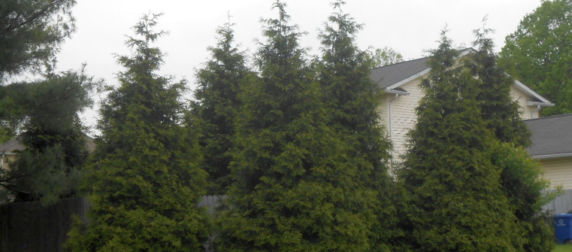Western arborvitae – Thuja plicata
Welcome to 2020! A new decade? I’ve heard it said that the decade doesn’t start until 2021 but I think this starts the ‘20s. I hope your holidays were great and you are ready for a fresh year.
This month I’ll continue the trend I started last month by featuring a favorite plant. When we think of the arborvitaes we normally think about the narrow upright, evergreen “soldiers” that are often found at the corners of the house. But no, the western arborvitae is a much larger, wider plant. The narrow, pyramidal eastern arborvitae (a popular one is ‘Emerald’) is great for a narrow evergreen screen along the edge of a patio. But the western arborvitae gets about 8ft wide and 30ft tall which is good for screening at the property line in tighter areas such as cities and neighborhoods. Pine and spruce, due to their large size are best for windbreaks and screens in large lawns and country properties. I hate it when I see the narrow arborvitaes or even dwarf Alberta spruce used for a screen on a huge open lot. They’ll never get big enough! You’ll get more bang for your buck with large trees like pine and spruce. But these might be too large for a city lot. This is where Thuja plicata or the western arborvitae comes in to fill the niche nicely. It will fill in quicker than the narrow hedging arborvitae but not get so big as the pines and spruce. The western arborvitae is a bit looser and natural-looking than the narrow ‘Emerald’. The foliage is soft to the touch and it fills in nicely for screening.
You might have heard of this plant as ‘Green Giant’. This is a variety named for a cloned selection of western arborvitae that is often seen in the trade. But don’t get too hung up on that. Many plants have been given catchy names by certain nurseries for marketing reasons and often, they are not significantly better than the species plant. Indeed, genetic diversity is a good thing so don’t be afraid to plant the common species plants.
Even in the wide-open country spaces, it’s not a bad idea to mix in some western arborvitaes with a pine and spruce windbreak to add to the diversity of the planting. Diversity is always a good thing to buffer your landscape against possible problems with bugs or disease in the future.

Western arborvitae – Thuja plicata


Comments are closed.